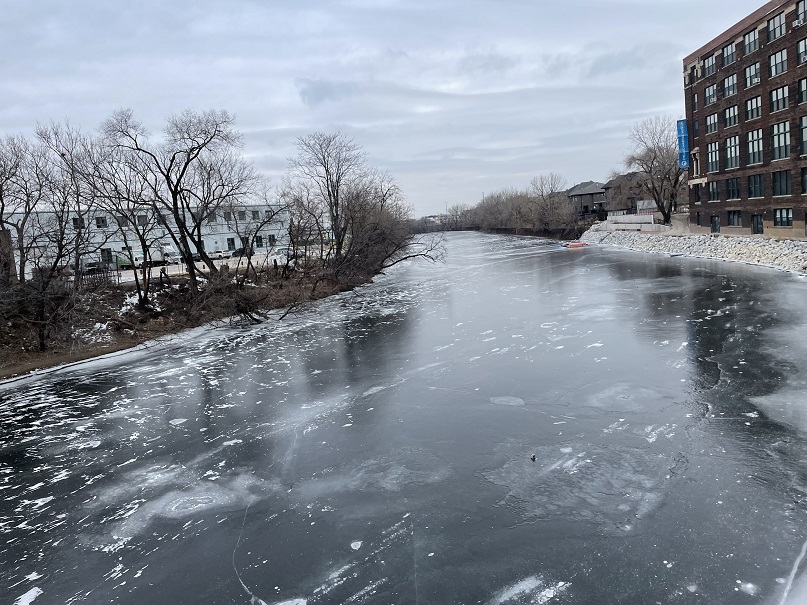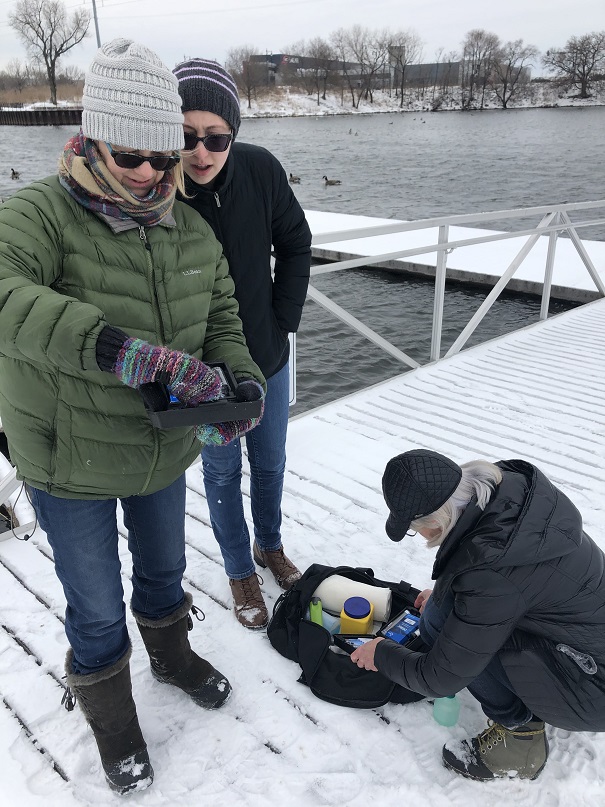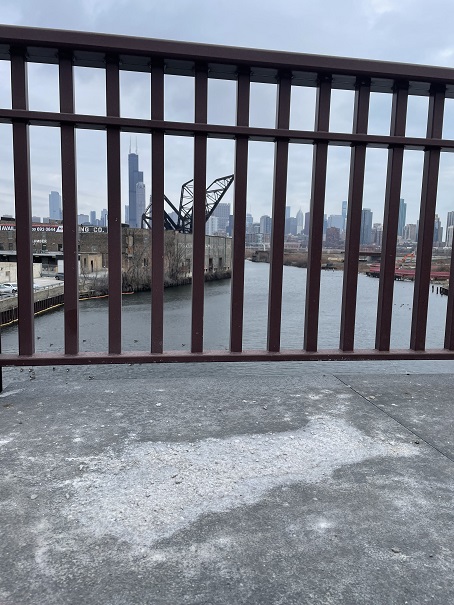By Jeff Shelden
Come rain, shine, sleet, or snow, the Chicago Group’s community scientists conduct water sampling at 11 sites along the Chicago River. Seeing the changes in scenery and vegetation over each season is both fascinating and experiential, but winter sampling comes with the additional challenge of discomfort!
While many Sierra Club Outings leaders follow the phrase “there is no bad weather, just bad preparation,” there is not a lot that can be done to keep one’s hands comfortable as tests are conducted sans gloves in the face of 20 mile-per-hour winds. Maybe it’s just me, but some of the coldest places in Chicago seem to be along our beloved river!

Why do I put myself through that? After all, a key reason we sample is to gauge conditions for recreation, and there isn’t going to be a lot of recreation when the river is frozen over or when parkas are required. Sampling year-round builds a full picture of river health. We act as a set of eyes and ears, ready to report abnormalities like pollution or suspicious chemical appearances, which don’t go away during the cold months.

One of the parameters we monitor is conductivity, where winter readings are particularly impactful to our story-building and advocacy work. Conductivity of water indicates the amount of ions, which are particles from salt that increase the ability of water to conduct electricity. Compared to ocean water, freshwater has a relatively low concentration of ions, but a drastic change in salt concentration can have adverse effects on an aquatic ecosystem.
Ions from salt are naturally found in river water and are dissolved from the minerals that make up the river’s bottom. However, in urban areas where road salt is used, unnaturally high levels of conductivity can occur. Also, when water evaporates on impervious surfaces like parking lots, the salts are left behind and then flushed into the river during the next rainstorm.

The results of my sampling (and those of our entire group of community scientists) can be found on our Chicago River Checkup site. We’re taking conductivity readings at a single point in time and cannot make firm conclusions about what happens the day or week after our test, but the results we’ve seen each winter since we started capturing data in 2017 show much, much higher readings between November and March than during warmer months. We have nearly 500 readings. For the Chicago River, we consider readings below 1900 µs/cm good, and above 1900 µs/cm bad. By this measure, 95% of our results are good. That’s great news. Unfortunately, the bad 5% could represent a poison to aquatic wildlife. These worrisome recordings were exclusively in the months of February and March.
There is a growing awareness of the impacts road salt has in our waterway, and yet the problem is worsening. The Metropolitan Water Reclamation District and the Friends of the Chicago River have initiatives and educational materials on the hazards road salts reek on plant and animal life.
We’re always looking for new members who are passionate about working to protect Chicago’s natural resources. Check out our calendar of events to attend the next monthly Water Team meeting!